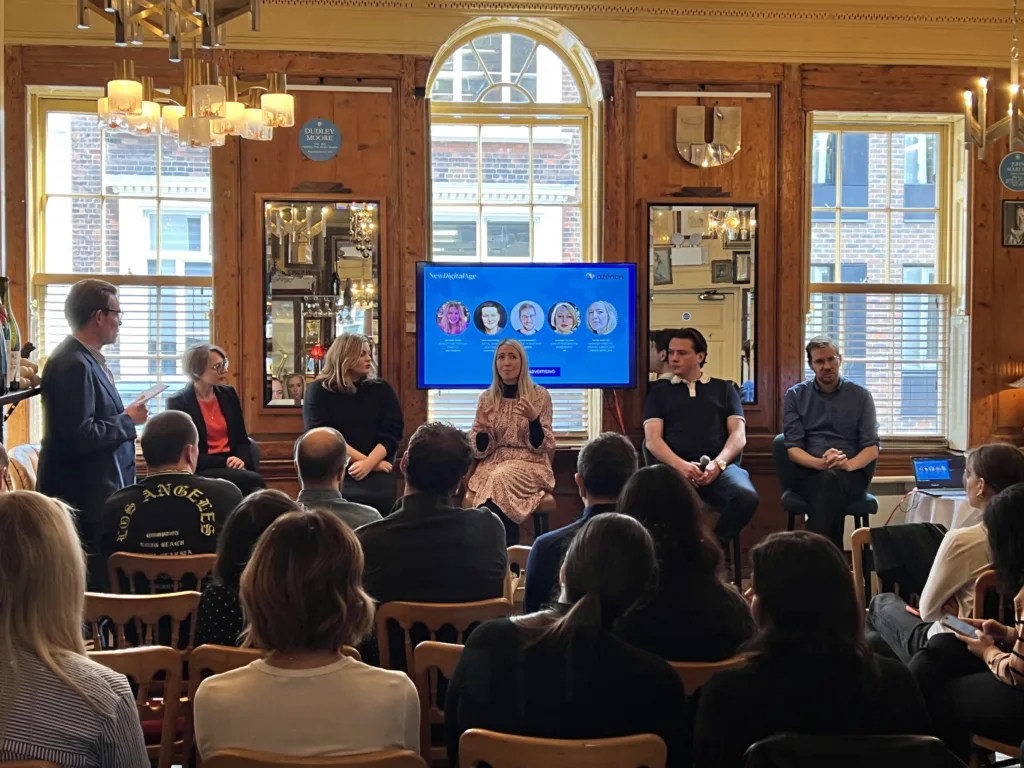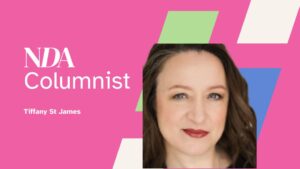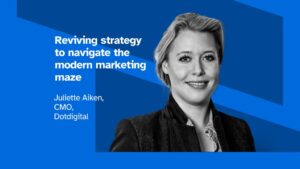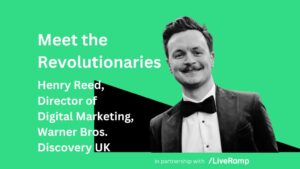Media and advertising execs gathered in London recently to hear a panel of industry experts discuss the use of attention metrics in media planning and campaign measurement.
New Digital Age’s editor Justin Pearse chaired the panel and was joined by: David Bassett, Chief Analytics Officer, Lumen Research; Bryony Keen, Product and Strategy Director, Matterkind; Dan Shepherd, Digital Group Director, Goodstuff; Elizabeth Lane, Head of Research and Measurement, IAB UK; and Katie Hartley, Managing Director – Product & Innovation, Dentsu Data Labs.
The discussion took place following a short presentation by ad platform provider Azerion and attention tech specialists Lumen Research revealing the key results of their latest research, the Amplify 2.0 report. Utilising Lumen’s tech, Azerion had analysed campaigns across finance, retail, and automotive sectors and found that high-impact formats, such as skins and in-game advertising, deliver a significant amplification effect, driving up to 43% more attention to subsequent standard formats.
Dom Tillson, Marketing Director, Azerion, set the scene for the panel discussion by introducing the research. He said: “When you work in the ad industry, you can sometimes forget that people don’t visit websites to look at our adverts. Attention as a concept is a very, very nuanced thing, but the fact is that digital advertising simply can’t work unless people are actually looking at it.
“In 2018, we carried out some research to determine whether the high-impact formats we were offering worked harder than standard formats and to find out whether initial exposure to high-impact formats had an amplification effect on the attention paid to subsequent standard MPUs (mid page units) in the same campaign. In 2023, attention is a significantly bigger metric, so we wanted to update our research and examine the amplification effect associated with a wider range of high-impact formats. We didn’t want to mark our own homework, so we were delighted to again work with Lumen on the project.”
Lumen’s Bassett commented: “This is a really unique study. Most of the time, when we measure the effect of an ad exposure, we look at how much attention that particular ad format gets in isolation. It’s a whole new way of thinking to examine how the effects of attention accumulate across multiple exposures.”
Hartley said: “Experienced media planners have always believed that this amplification effect existed, but we’ve never had anything quantifiable to integrate into our measurement. At Dentsu, we’ve been researching attention for 6 years, so it’s not a new topic, but, for whatever reason, attention has taken a really long time to get the practical traction it deserves. This research represents a step forward towards a better understanding of how attention can be leveraged and optimised.”
Attention under the spotlight
Lane believes that, after years of confusion, the ad industry is now moving closer to a common understanding of attention and its key measurement techniques. She said: “In simple terms, attention is when somebody consciously looks at or listens to your advertising. We’ve done a lot of work at the IAB to help explain four of the main methodologies being used to measure attention.”
Matterkind’s Keen commented: “I’m obviously interested in how attention can drive and enhance outcomes across the full funnel. For us, it’s often about combining attention with those lower funnel metrics and finding the most cost-effective mix of formats to drive meaningful leads or acquisitions.
“One point worth making is that different objectives require different levels of attention. If it’s a brand awareness campaign, you might be looking for a higher level of attention than you need for a lower funnel performance campaign.”
Shepherd added: “For me, the most interesting aspect of this research is to see the positive impact of brand building on the mid and lower funnel, driving more cost effective outcomes. That’s something that our clients are always looking for. That said, increased attention is not an end result in itself. It’s an improved proxy that we can use to inform our media plans.
“One tip I would offer is that, depending on the measurement partner you work with, methodologies will vary a lot. Some will model their results based on past campaigns, rather than on the actual creative you are using in your live campaign. It’s important to dig into the methodologies that your partners are using to make sure you’re getting the data you need.”
You can access an overview of the Amplify 2.0 report here.












